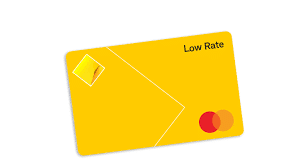Anúncios
Australia’s economy is always changing, and it’s important to understand these changes. This section looks at key financial insights that shape the country’s economy. It sets the stage for a detailed economic analysis.
Right now, Australia’s cash rate target is 3.85%. The economy is growing at a rate of 1.3%, and inflation is at 2.4%. We will dive deeper into these numbers in the next sections. They show the key factors that make up Australia’s economic situation.


CommBank Low Rate Credit Card
Overview of Australia’s Economic Landscape
Australia’s economy is shaped by many factors. In the 2023-24 financial year, it grew by 1.5%. This shows the economy is strong, even with a 0.2% rise in the June quarter of 2024. However, GDP per capita fell by 1.0%, which is a worry.
Anúncios
Current Economic Growth Rates
Australia’s economy is growing at 1.5%. This shows it’s bouncing back from market changes. New sectors and steady demand are helping. But, not everyone’s experience is the same.
Anúncios
Key Economic Indicators
It’s important to know the health of Australia’s economy. The unemployment rate is 4.1%, showing jobs are available. Wage growth is 3.4%, and average weekly earnings are $1,510.90. These numbers show how inflation and growth affect Australians.

Inflation Trends in Australia
Australia’s inflation trends have seen big changes lately. This has big effects on how much things cost for consumers. The consumer price index (CPI) went up by 1.0% in the June quarter. This is the first time prices have risen annually since late 2022.
Costs have gone up in areas like new housing, fuel, and food. This makes it harder for families to manage their money.
Consumer Price Index Overview
The consumer price index is a key measure of inflation in Australia. It shows how prices change over time. The latest data highlights what’s driving up costs in different areas.
Important parts of this index include:
- Housing costs, which have gone up due to demand and supply.
- Fuel prices, which are affected by global oil market changes.
- Food prices, influenced by farming conditions and transport costs.
Impact of Inflation on Households
Rising inflation and cost of living challenges are affecting many Australian families. Households are struggling to make ends meet. This is causing changes in how they spend their money.
- It’s harder to afford basic needs like food and housing.
- People are turning to credit or savings to keep up with living costs.
- There might be changes in how families shop for things they need.
Employment and Unemployment Rates
Understanding the labour market is key to knowing the economy in Australia. The latest reports show an unemployment rate of 4.1%. This is a stable rate for job seekers.
Despite a 1.1% increase in total hours worked, wage growth is slow. This leads to interesting talks about jobs in different areas.
Current Unemployment Statistics
The latest numbers show a mixed view. The 4.1% unemployment rate is stable, but there’s a big difference between private and public sectors. The private sector saw only a small wage increase.
This could mean workers might not be as motivated or satisfied. The labour market’s health is a big concern for those making policies and studying the economy.
Wage Growth and Employment Growth Factors
Wage growth is important for household finances. In the private sector, wages grew by 0.7% in the last quarter. This is much lower than the 2.0% growth in the public sector.
This shows different financial challenges for workers. It also affects employment growth. The year-on-year wage growth is 4.1%, showing a positive trend. But the slow increase might signal future challenges.
Household Spending Patterns
Recent trends show big changes in how much people spend at home. The June quarter saw a 0.2% drop in household spending. This fall was mainly because of less money spent on travel and entertainment.
Even food, a basic need, saw a decrease. This change has hit many Australian families hard.
Recent Changes in Household Spending
Changes in spending are linked to rising costs and stagnant wages. Reports show a few key shifts:
- Less money spent on going out and having fun.
- Shopping for non-essentials is down.
- People are choosing to buy what they really need over what they want.
These changes show how economic conditions are affecting what people buy. As these trends continue, their impact on the economy will likely grow.
Household Saving Ratios
The saving ratio has dropped to 3.8%, the lowest since 2006-07. This fall means families are struggling to save with rising costs. Looking at these ratios helps us understand the economy and consumer behaviour:
- More people are using credit to keep spending.
- Households are using savings for everyday costs.
- This could harm their financial future.
Australians’ saving habits show the financial challenges many face in tough economic times.
The Role of Government Spending in the Economy
Government spending is key to Australia’s economic health. It supports many sectors and helps during tough times. The latest data show that government spending boosted the economy in the last quarter.
Impact of Government Benefits on Economic Growth
Government benefits have a big impact on the economy. In the June quarter, spending by the Commonwealth government helped the economy grow by 0.2%. More money for health and household benefits has boosted demand. This spending keeps vital services running and helps those in need.
Public Sector Investment Trends
Investment in the public sector is growing fast, up by 6.3% recently. A lot of focus is on infrastructure projects. These projects create jobs and help the economy grow in the long run.
Trade Dynamics and Contributions
Australia’s economy is heavily influenced by trade. This is key to understanding its growth. Recently, exports have seen a small rise, thanks to services like travel, which grew by 9.9%. On the other hand, imports have dropped by 0.2% as different sectors adjust to new global needs.
Exports and Imports Overview
The balance between exports and imports is vital for Australia’s economy. The rise in exports is a big change. But the fall in imports makes us wonder about local spending and market trends. The growing current account deficit shows the challenges in trade, especially with changing commodity prices.
Effects of Global Market on Trade
Global factors have a big impact on Australia’s trade scene. Changes in the world economy can change what people want from Australian products and services. Australia must deal with these changes, including political and economic shifts. Keeping strong trade ties is key to keeping the economy growing, despite international pressures.
Challenges Facing Australia’s Economy
Australia is facing big economic challenges that are changing its scene. The main issue is the rising cost of living for families all over the country. Prices for basic items and services are going up, while wages are not keeping pace. This makes it hard for many to cover their expenses.
These problems are not just local. Global factors also play a big part in making things worse.
Cost-of-Living Pressures
The cost of living has gone up a lot in recent years. This is due to inflation and problems with supply chains. Things like housing, food, and transport are getting more expensive.
Australian families are finding it tough to manage their budgets. Their wages don’t go as far as they used to. This can lead to less spending by consumers, making things even tougher for the economy.
Impact of Global Economic Changes
Global events and changes in trade policies are affecting Australia’s economy. Trade rules are changing, with more countries turning to protectionism. This can make goods more expensive and harder to get.
Dealing with these global changes is a big challenge for Australian leaders. They are trying to keep the economy stable despite these obstacles.
Future Economic Projections
The next few years will bring both challenges and chances for Australia’s economy. Economic forecasts show a hopeful outlook, especially for GDP and jobs. It’s crucial for businesses and people to understand these trends as they change.
Forecasts for GDP Growth
Australia’s GDP is expected to grow slowly, at 1.1% in 2024. It might grow a bit more, to 2.2%, in 2025. This growth depends on many things, like how much people spend and invest, and the world market.
Predicted Trends in Unemployment and Inflation
The jobless rate is expected to rise to 4.2%. This could be due to changes in different industries. The inflation outlook is also important, with core CPI likely to stay around 3.0% in the future. This could help ease financial stress for families, boosting the economy.
Conclusion
This economic summary gives a detailed look at Australia’s economy. It highlights the need to understand current trends and challenges. The impact of inflation on households is significant, affecting spending and economic behaviour.
Global economic changes also complicate trade. This means Australia needs a strong response to stay resilient.
The future of Australia’s economy depends on many factors. Government policies and changes in consumer behaviour are key. Keeping an eye on trends in employment and wages is crucial.
This will help shape Australia’s economic future. By understanding these factors, the country can tackle the challenges ahead.
In summary, Australia’s economy will be shaped by both domestic and international factors. It’s important for stakeholders to stay updated and adapt. This will help manage risks and find new opportunities in a changing world.
FAQ
What is the current cash rate target in Australia?
How has Australia’s economic growth rate changed recently?
What is the current inflation rate in Australia?
What is Australia’s unemployment rate?
How has household spending changed recently?
What role does government spending play in economic growth?
How are Australia’s exports and imports currently performing?
What challenges are impacting Australia’s economy?
What does the future hold for Australia’s economic growth?
Conteúdo criado com auxílio de Inteligência Artificial


